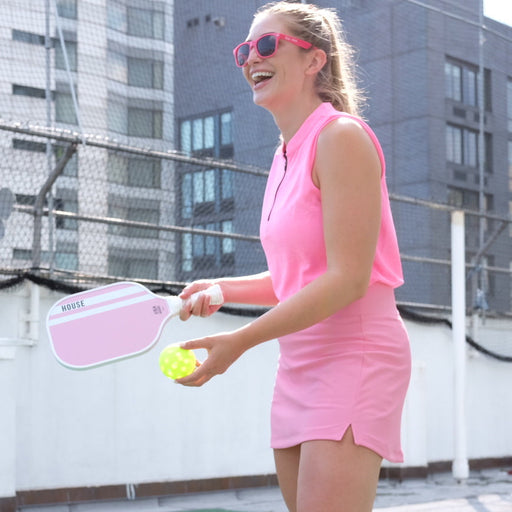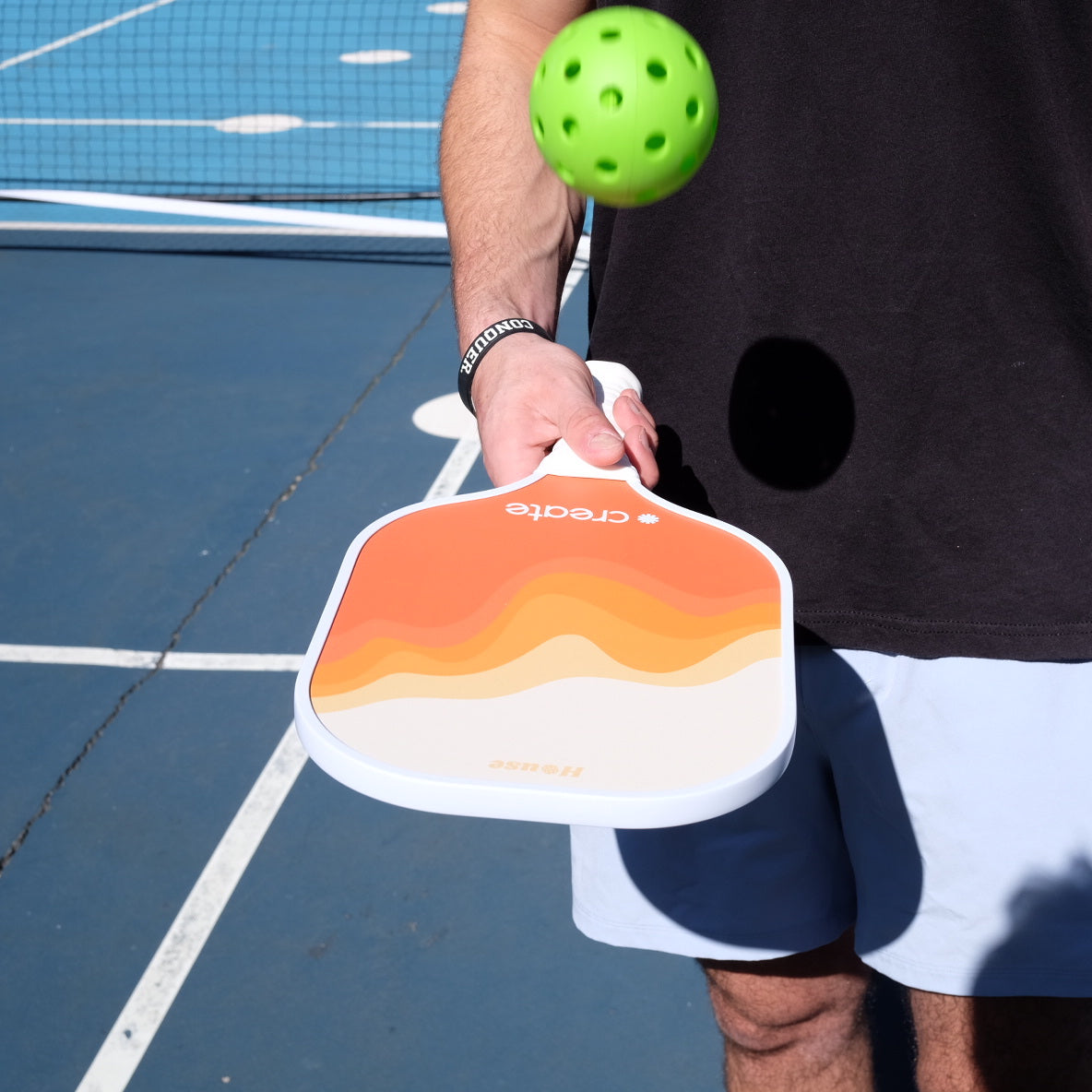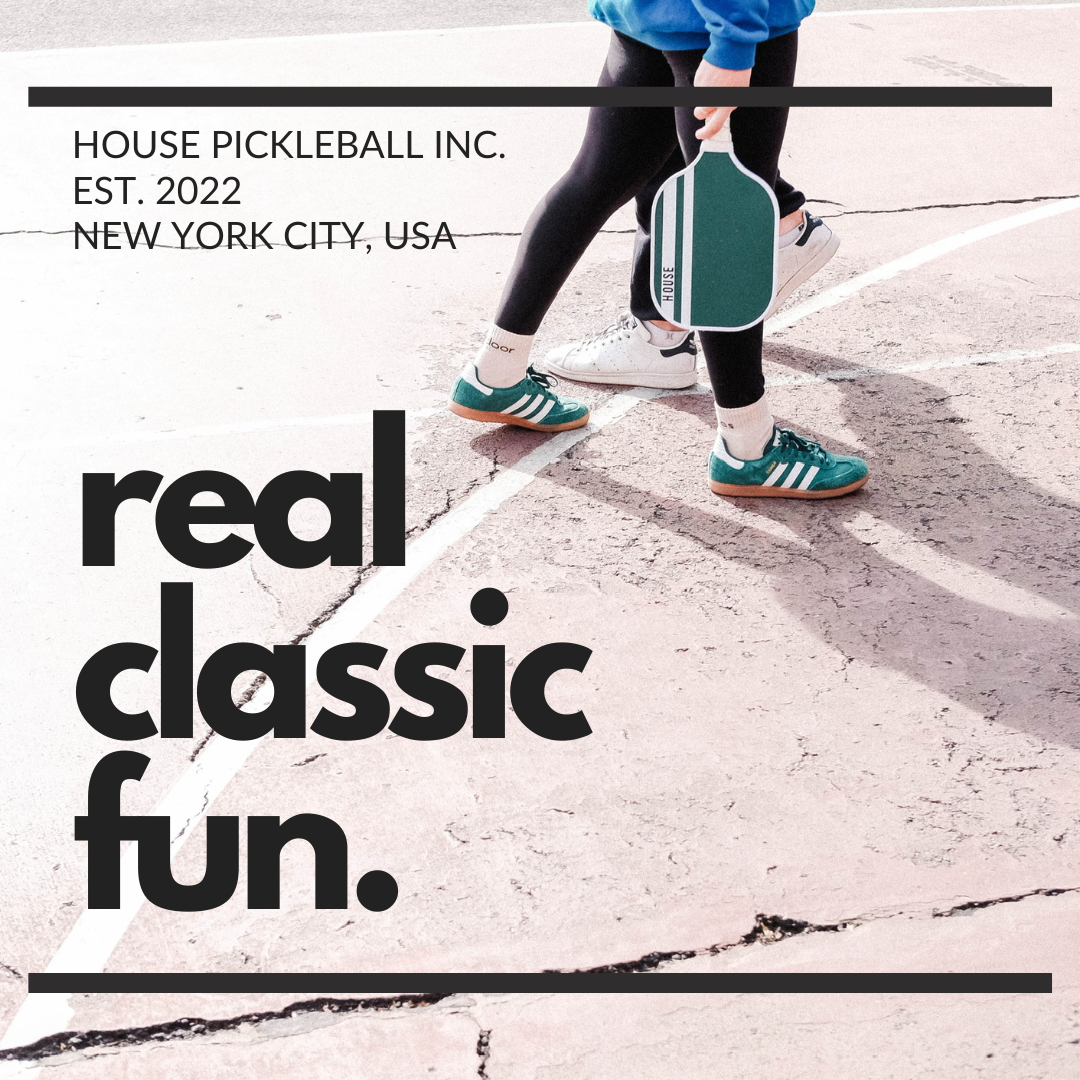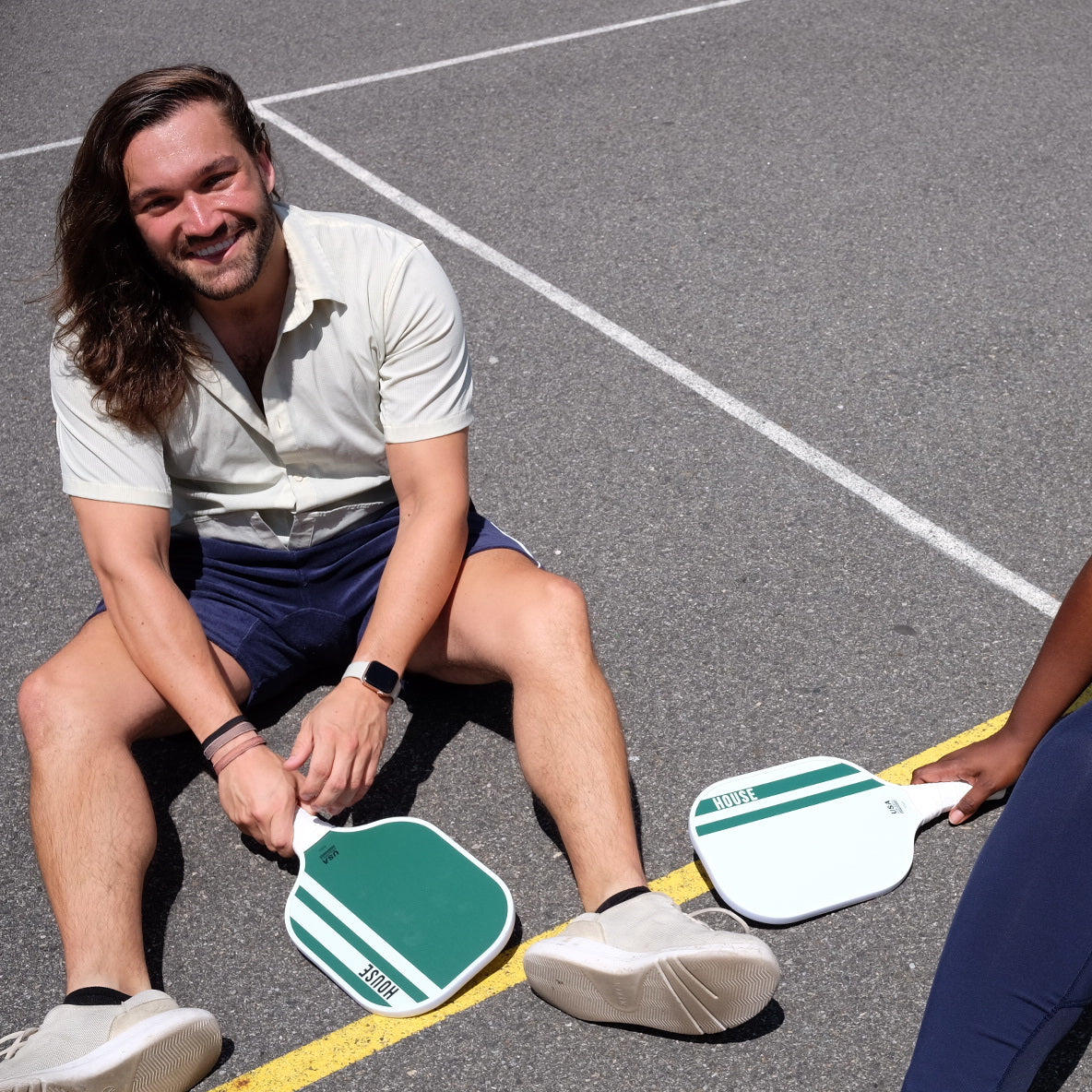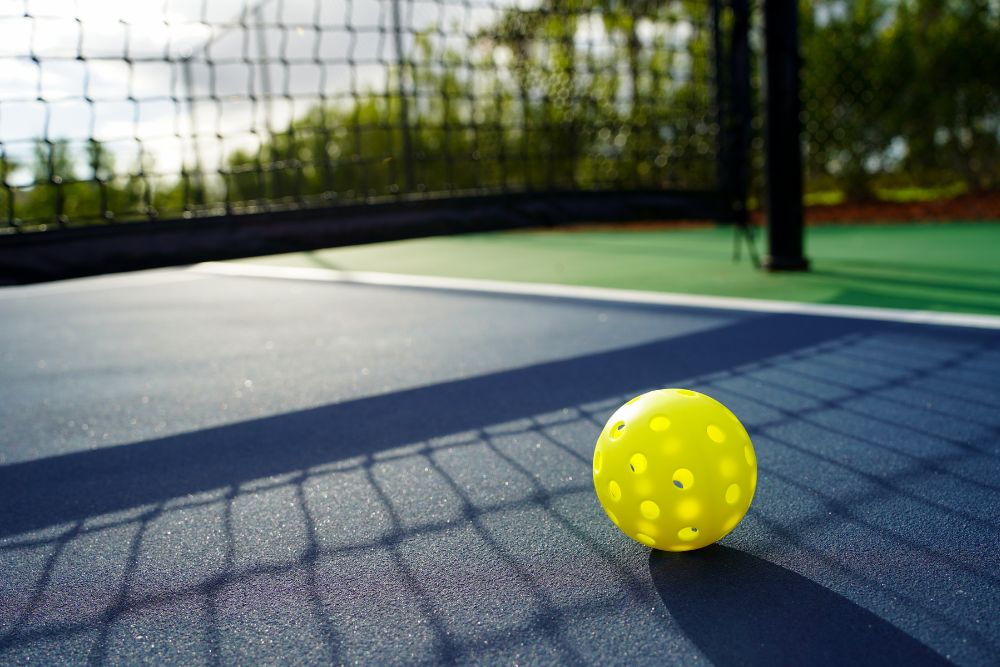
The 3 Most Important Singles Rules In Pickleball
The terms “singles” and “doubles” are very commonly mentioned in the game of pickleball. If you didn’t have the opportunity to play tennis or any kind of racquet sports you might have been wondering about these terms or more precisely how a singles pickleball game is played and judged.
Depending on your desired pickleball game type and the number of players involved, the rules can vary between singles and doubles pickleball. As the term says, a “singles” game is played with one opposing player, each on one own side of the court.
The game of singles pickleball is very physically demanding on the player. That is why most hobby players choose to play doubles.
I am going to do my best to explain to you how a singles pickleball match is played. We will cover the rules and aspects of 3 main topics of the game: serving, how to move, and how to score a point in the end.
1. Serving

First things first, serving is performed depending on the score. If the score is even, the serve is going to be performed on the right side of the court that is serving. And if the score is odd the serving will be performed from the left side of the court that is currently serving.
Unlike the doubles strategy, the player has only one serve per point. The serve will always be aimed diagonally to the other side of the court, making a foul if the player misses the quarter of the court of receiving.
The big deep serve and the big deep return of the serve are key principles to learn and execute in the singles game:
- The big deep serve – requires a precise shot to the opponent's receiving corner of the serve so you have enough time to relocate on the court for better control of the angles of your next return.
- The big deep return – also consists of returning the ball to the far edge of the corner so you can relocate and anticipate the next attack of the opponent.
2. The Ongoing Point Game
When serve has been performed it is time to move into the Non-Volley Zone Line or “the kitchen” zone as experienced players like to call it. Even if you are a beginner, getting familiar with all the pickleball lingo can be super useful!
The most important principle in an ongoing point game is to cut off the opponent's shot angles and to have control of your side of the court indefinitely throughout the point.
To achieve this control of the court, the player must continuously get from one side to the other and move from and to the kitchen, covering all sides of the court as often as he/she can.
By following the flow of the game and the flight of the ball you will anticipate the trajectories of the flight and catch them at just the right moment for your opponent to lose the point.
In the game of singles pickleball, the key to winning is to find the unguarded part of the court or “open court”. By pushing the ball into open parts you will tire your opponent and take the point by exploiting their lack of speed, strength, or concentration.
Overall the game in singles matches is a lot faster and taxating on the endurance of the players because of the table tennis-like speed of the game, and covering the whole court by yourself makes the effort feel nothing less than a regular tennis match.
All of this makes singles pickleball the greatest challenge to a player's ability and the state and physical form that the body is in.
3. Scoring

Scoring in singles games is a lot like a table tennis match. Unlike doubles games where there is a combination of the points made by either team, the singles players will get the precise point that they made without all the fuss about many scores in doubles games.
If you win a point on the serve, you will win the ball for another serving and that pattern will continue until the “losing” player manages to win a point. The continuing serve will be executed by switching between the right and left sides every time the serving player wins the point.
To win a game, a player must have earned 11, 15, or 21 total points depending on the quantity of the points that is agreed upon before the game. And of course, you must beat your opponent by 2 or more points.
If the score is “one above” (11-10 for example) the game will continue until one of the opponents manages to score those 2 points needed to end the game or until one of the players gives up or drops out.
Also one of the key facts, which can be surprising to some sports fans, is that only the player currently serving can win the point. If the opponent manages to defend the court, making the opponent commit a fault, they will not earn a point, but only get the right to serve!
Singles Vs Doubles
Singles and doubles pickleball games have differences in how the game is scored and what is generally expected from players to do on their own. However, these differences are small and every pickleball player can easily adjust to and play both types of games in theory.
The biggest difference is the amount of physical demands that players have to get through to successfully play singles. As we said it is almost incomparable effort that takes to play singles versus doubles games.
The basic rules of doubles pickleball transfer to singles pickleball.
The pickleball rules for serving, the Non-Volley Zone, line calls, and faults all apply to singles pickleball but there are a few exceptions that you will discover in this guide.
While in doubles games the player covers (only) a quarter of the court, the singles games player is alone on his/her side of the court and will have to cover the whole half of the court.
Since you are on your own the whole game it can be a very demanding undertaking to go through to win the game.
But all this effort really is worth it since singles games are really the best way to show off your skills as a pickleball player and put them to the ultimate test, regardless of your skill level.
Faults
The faults remain similar to doubles games, with every sector of the game having small, if any, changes in singles game.
In serving, for instance, the serve will always have to be aimed diagonally to the opposing quarter of the court, making a fault if the player misses the quarter of the court of receiving the serve.
Also if the ball fails to cross to the other side of the court, hitting the net or going completely off bounds, is considered a fault.
And if the player receiving the serve kicks the ball before the ball taps between both sides of the court, it will be considered a fault and the player serving will get the point. This rule for fault is called a 2-bounce rule.
Serves landing in any part of the kitchen (including its line separating it from other parts of the court) will also get you a fault and opposing players receiving the serve will get the ball for serving.
Players are not allowed to volley in the kitchen at any time of the game. The ball can be hit from the kitchen as long as it touches the court first.
Conclusion
If you learned anything about pickleball in general through this article it should be that rules are not to be learned just theoretically but the real way to learn is by heading to the park/center with courts and just playing the game.
Learning through playing and training every aspect of the game to perfection is the way to go. Well, the best way to learn anything really, in general, is to fail and make faults and mistakes that you will correct through time and experience.
Nuances of the game are meant to be learned this way and this way only, point after point and game after game. So these guides and articles are not replacements for education that you could get on the court with the opponent waiting to exploit your weaknesses.
In addition, this article is not meant to be read once but to get back to after games that you have lost to remind yourself of the singles rules for pickleball that you may have overlooked. With that combination I’m sure you will get better results.
Also if you never played pickleball, consider this guide a wake-up call to get to the court and experience the new sports extravaganza! The pickleball community is welcoming and through this activity, you will meet many enthusiastic people to add to your life and to gather new connections and experiences.
So, with practice and dedication, satisfying results will come and you will understand the rules, play better, and meet a better self. Ain’t that a perfect motivation to apply to life too?






